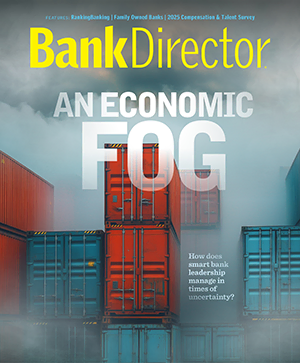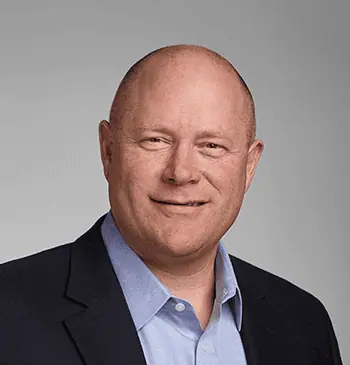Don Slagle is the director of Agri-Access.

The Missing Link in Your Portfolio Growth Strategy
When built into capital planning early, secondary market lending becomes a powerful lever for growth.
Brought to you by Agri-Access

When you think about secondary market lending, is it as a relief valve for times when capital gets tight? If so, you might be missing its full potential.
In agricultural lending, opportunity often arises quickly. Neighboring farmland goes up for sale. Equipment needs replacing immediately. And when it’s time to expand operations, it often comes with the need for new facilities.
Farmers act when the time is right, but they need capital solutions that support them and move as quickly as they do. That’s where secondary market lending comes in.
When built into your capital strategy, it creates room for you to close more high opportunity loans. Instead of reaching for it only when internal resources are stretched, a planned approach gives you a higher ceiling at the start of the cycle. You’ll have a clearer view of your lending capacity so you can offer the best solutions at the front end.
You’ll deliver a better borrowing experience and set yourself up for portfolio growth.
The Snag in Secondary Lending, and How to Fix It
Secondary lending has all the makings of a smart growth strategy. Many strategic-minded lenders have considered it. So why isn’t it more common?
Historically, it hasn’t always been practical. The challenge often lies in the partnerships. Bringing an outside partner into the lending process can introduce complexity. This slows down underwriting, increases the need for documentation and places added burden on your staff. The result? Delays that jeopardize the deal and strain the borrower relationship.
But today, stronger options exist. Some secondary market lenders have refined their processes to work in sync with yours, streamlining operations without adding paperwork or steps for the borrower. Even better, the right partner goes beyond just supplying capital. They offer fast underwriting, ag-specific expertise and borrower-friendly loan structures. Most of all, they should offer solutions that enhance your services and make you more competitive. Instead of bogging you down, a strong secondary lending partner creates efficiency and positions you to grow.
What to Look for in a Secondary Lending Partner
When a secondary lending partner adds complexity or overhead, it can stall your momentum. To truly make participation lending part of your capital strategy, you need a partner that feels like an extension of your team. Here’s what to look for in a secondary lending partner:
1. Ease of administration. A strong partner brings secure portals, structured workflows and clear communication protocols to keep the process moving without overloading your internal team.
2. Ag market expertise. It’s not enough to simply fund ag loans. Your partner should understand ag cycles, working capital needs and the credit realities producers face. That knowledge leads to smarter loan structures that serve your borrowers better.
3. Value-added resources. The right partner does more than participate. They elevate your offering. Look for value-added support like extended terms, ag-specific appraisals and help navigating complex transactions. These capabilities make your institution more competitive without increasing your lift.
Three Steps to Growth Through Secondary Market Lending
1. Build secondary lending into your annual growth plan. When secondary lending is mapped into your strategy, you can serve more qualified borrowers and better manage risk. If a top tier borrower walks in the door with a big opportunity, you’ll be ready. That’s because you’ve built a higher ceiling into your capital plan.
2. Choose the right partner. Select a secondary market lending partner with agricultural expertise and a streamlined process. A reliable partner equips you to move quickly when demand rises, without compromising service or liquidity.
3. Use it to compete and win. With the right partner and structure, you can offer better terms, faster turnaround and greater flexibility than your competitors without stretching your capital. That’s a win-win solution.


